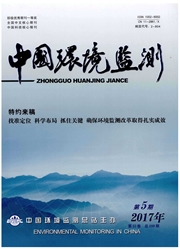

 中文摘要:
中文摘要:
地表水体中的硝酸盐污染已经成为全球关注的热点环境问题之一。现今,国内外均建立了相关的监测网络对地表水体的水质实施长期监测,但是却导致大量的监测数据累积,给后续的科学研究工作带来了不便,尤其是在庞大的监测网络中如何选取有代表性样点的研究点则成为急需解决的问题之一。以比利时弗拉芒地区地表水的长期监测物理化学指标为例,利用决策树模型评估地表水样点的硝酸盐污染来源专家分类的有效性,为点位优化提供理论依据。原有监测点位的污染源专家分类和模型输出的可匹配率为80%,优化后监测点位从原有47个点降低到30个点,提高了监测工作效率。
 英文摘要:
英文摘要:
Nitrate pollution in surface water has been becoming an environmental issue worldwide. The establishment and development of water environment monitoring programs results in a large amount of data and relative scientific work, especially representative sampling point selection. This paper set up a decision tree model based on physic-chemical parameters to evaluate expert classification. The results demonstrated that the correct classification percentage is 80% compared to expert knowledge. The number of sampling points was reduced from 47 to 30 and promotes work efficiency.
 同期刊论文项目
同期刊论文项目
 同项目期刊论文
同项目期刊论文
 Analyses of the vertical and temporal distributions of sulfate-reducing bacteria in sediments of Lak
Analyses of the vertical and temporal distributions of sulfate-reducing bacteria in sediments of Lak Simple and Efficient Procedure for Highly Diastereoselective Synthesis of trans-1,1-Disubstituted-2,
Simple and Efficient Procedure for Highly Diastereoselective Synthesis of trans-1,1-Disubstituted-2, Rare earth element geochemistry of waters and suspended particles in alkaline lakes using extraction
Rare earth element geochemistry of waters and suspended particles in alkaline lakes using extraction Nitrate sources and dynamics in a salinized river and estuary - a δ15N-NO3- and δ18O-NO3- isotope ap
Nitrate sources and dynamics in a salinized river and estuary - a δ15N-NO3- and δ18O-NO3- isotope ap 期刊信息
期刊信息
